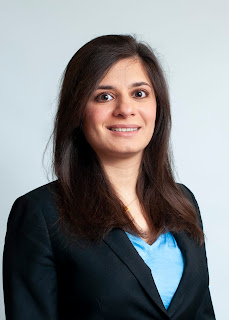Stephanie Sun MD MS
Fellow in Rural Health Leadership at Massachusetts General
Hospital
PGY-5
April 10, 2019
April 10, 2019
Point of care ultrasound puts the
ultrasound in the hands of the provider at the bedside of the patient. It is
huge in acute care settings like emergency medicine where getting to a timely
diagnosis is critical. It’s also been shown to assist with diagnostic
uncertainty, in some cases reducing the number of additional studies performed,
and improves patient satisfaction. But it’s not only the patients in emergency
rooms who might benefit from ultrasound at the bedside.
As a general internist who provides care
on a Native American reservation in remote rural South Dakota, point of care
ultrasound has the potential to help bridge logistical gaps in care. The next
closest hospital to my clinic in South Dakota is 50 miles away. But if patients
are requiring specialty services, they will find themselves travelling 220
miles (that’s 3 hours and 42 minutes drive) to the nearest academic center in
Sioux Falls – a huge burden on our patients! If a patient is going to be making
a trip that far from family and their community of support, we want to make
sure that it is necessary with the best clinical certainty possible. With a
point of care ultrasound in hand, my ability to screen and triage is taken to
the next level.
 |
| An ultraportable handheld ultrasound about to be put into action |
If point of care ultrasound is so great, why isn’t it
already being used in every rural clinic in the country? Great question. The
most commonly raised concerns are 1) obtaining training, 2) maintaining skills,
and oh yes 3) obtaining an ultrasound. Fortunately, new technologies have led
to the release of ultraportable handheld ultrasounds at much lower price points
than traditional machines. But even with a machine, patient safety must come
first. It would be hard to feel comfortable trying a new skill if you are
practicing somewhere where there is no one around who can teach it to you or
provide the feedback needed to continue to improve.
As a resident, I was fortunate enough to get to create and
build an ultrasound curriculum for general internal medicine residents. Taking
many lessons from our emergency medicine colleagues, we learned basic skills to
pick up on depressed ejection fractions, pneumothoraxes, and free fluid in the
abdomen. Now as someone who mainly practices in the outpatient setting, I
wonder which other exams would be the most useful to the primary care provider.
With support from the COE in Healthcare Quality and Patient
Safety, I’ll be able to acquire an ultra-portable handheld ultrasound. We’ll be
training a few fellow rural physicians affiliated with both MGH and the rural
South Dakota clinic in ultrasound skills, and tracking their use in South
Dakota. Which exams are they using it for? How often are they using it?
Feedback will be provided to them on their interpretations of images to help
them continue to hone their skills.
While we work through the IRB process, I’ve held two
ultrasound scan sessions where a small group of rural physicians has been
learning the ins and outs of point of care ultrasound. We’ve even done some
scanning on “healthy volunteers,” that is, each other. We’ll be meeting again
to keep building our skills and comfort before heading to the wards to practice
more scans.
Along the way I’ve reflected on all the skills we’ve gained
along our journey as trainees, and how a skill can go from total unfamiliar
territory to the routine. It is exciting to see how a new skill can percolate
through a discipline, like point of care ultrasound is through internal
medicine. By learning lessons from those who have done it before us, and
adapting the tools to suit our unique needs, we’ll continue to push boundaries
to provide the best clinical care to all populations.


